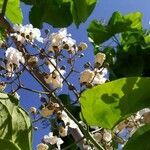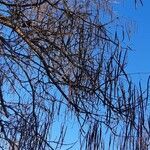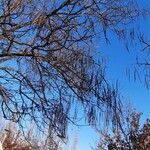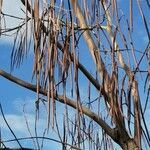A tree. It loses its leaves during the year. It grows 9-13 m high. It has a spreading crown. The leaves are broadly oval and downy underneath. The flowers are small and dull white with yellow marks. The pods are long and slender. They grow 30 cm long.
With smaller, mainly yellow fls, and with the lvs glabrous beneath and often lobed, rarely escapes in our range.





